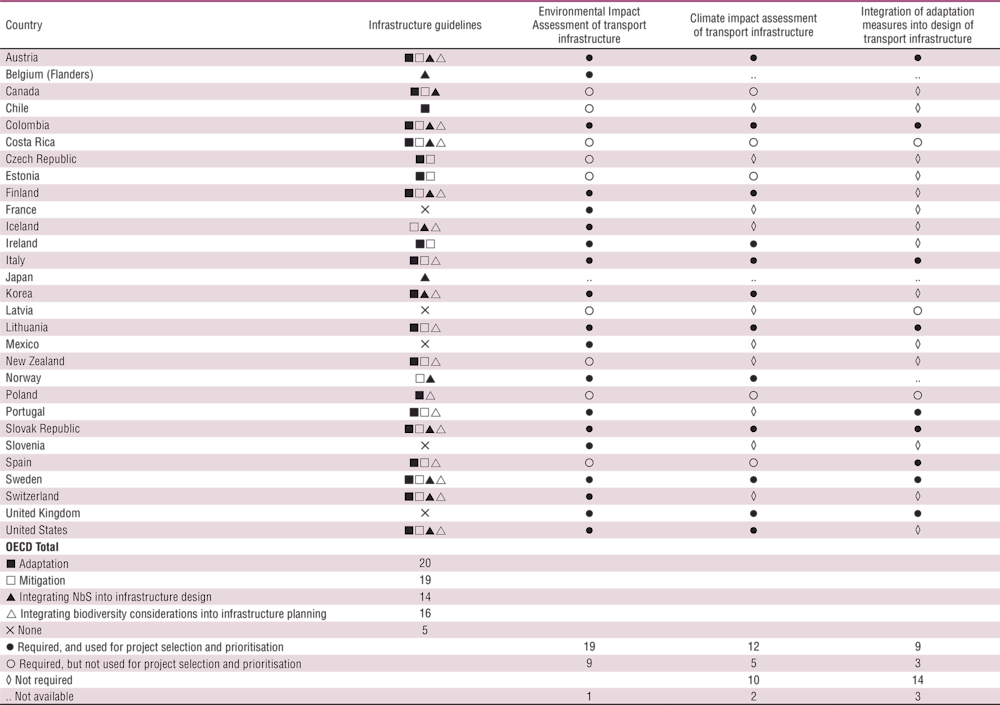The magnitude and urgency of the climate crisis calls for a new holistic approach to infrastructure planning and delivery. Achieving net-zero emissions in 2050 will require global annual investment in the energy sector investment to rise from USD 2.3 trillion in recent years to USD 5 trillion by 2030 (IEA, 2021). For transport‐related clean energy, the estimated rise needs to be from USD 75 billion per year to over USD 570 billion by 2030 (IEA, 2021). At the same time, infrastructure assets and operations will be increasingly exposed to the effects of climate change, which will require an integrated approach to building resilience. In this context, the OECD Recommendation on the Governance of Infrastructure highlights the need to strengthen the quality of governments’ approaches to delivering environmentally sustainable and climate-resilient infrastructure, and to engage with the private sector and the civil society to work collectively towards achieving climate action objectives.
The OECD Infrastructure Governance Indicator (IGI) on environmentally sustainable and climate-resilient infrastructure provides an overview of the different governance elements supporting environmentally sustainable and climate-resilient infrastructure: enabling conditions, planning, project appraisal, capital budgeting and financing and monitoring. Country indicator values range from 0.19 to 0.93 with an OECD average of 0.52 (Figure 8.7). While countries show some good practices, there is room for improvement in all five sub-pillars.
Most OECD countries are aware of the importance of sound planning for environmentally sustainable and climate-resilient infrastructure and many have developed guidelines for implementing the same: 69% of countries with available data (20 out of 29) provide infrastructure guidelines for covering climate change adaptation, 66% (19 countries) climate change mitigation, 55% (16 countries) biodiversity considerations, and 48% nature-based solutions (14 countries) (Table 8.8). Such guidelines are key to develop climate-resilient infrastructure systems and promote the use of green infrastructure to complement or replace grey infrastructure. The guidelines can also increase the integration of environmental and climate considerations into infrastructure planning and delivery. For example, Spain’s Centro de Estudios y Experimentación de Obras Públicas co-ordinates the cross-cutting working group on climate change and resilience in roads to provide guidelines for incorporating climate change considerations into all phases of the road life cycle.
Countries could also make greater use of methodological tools to integrate environmental and climate considerations into the project appraisal process. While all OECD countries for which data are available require an environmental impact assessment to evaluate the possible impacts of a transport infrastructure project, only 68% (19 out of 28) systematically use the assessment results to inform project selection and prioritisation. Similarly, while 63% (17 out of 27) require a climate impact assessment to estimate the potential emissions of a transport infrastructure project, only 44% (12 out of 27) systematically use the results to select or prioritise projects. Less than half of OECD respondents (12 out of 26 or 46%) require climate change adaptation measures to be integrated into the design of transport infrastructure projects. Only 35% (9 out of 26) systematically use climate resilience criteria to inform project selection and prioritisation (Table 8.8).


